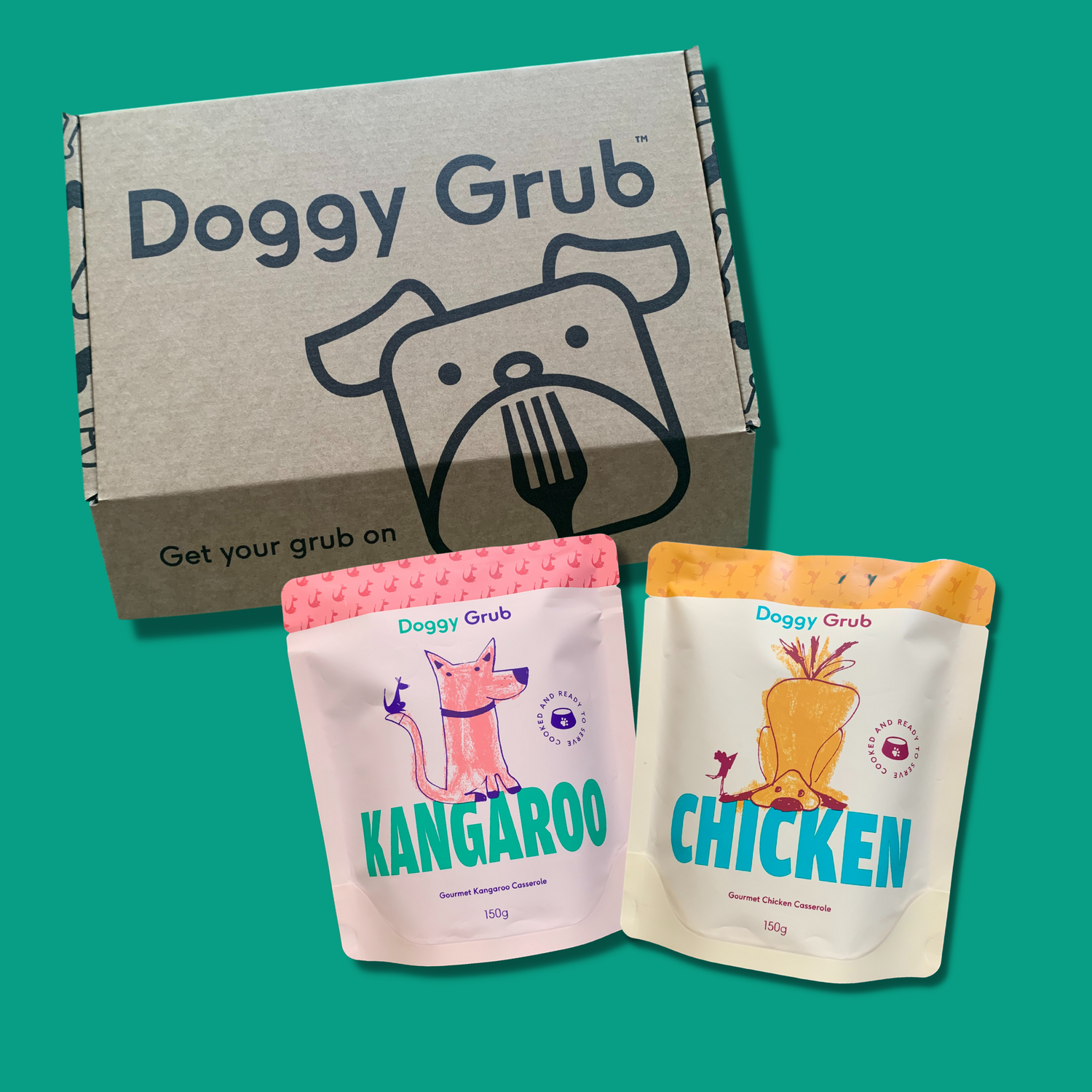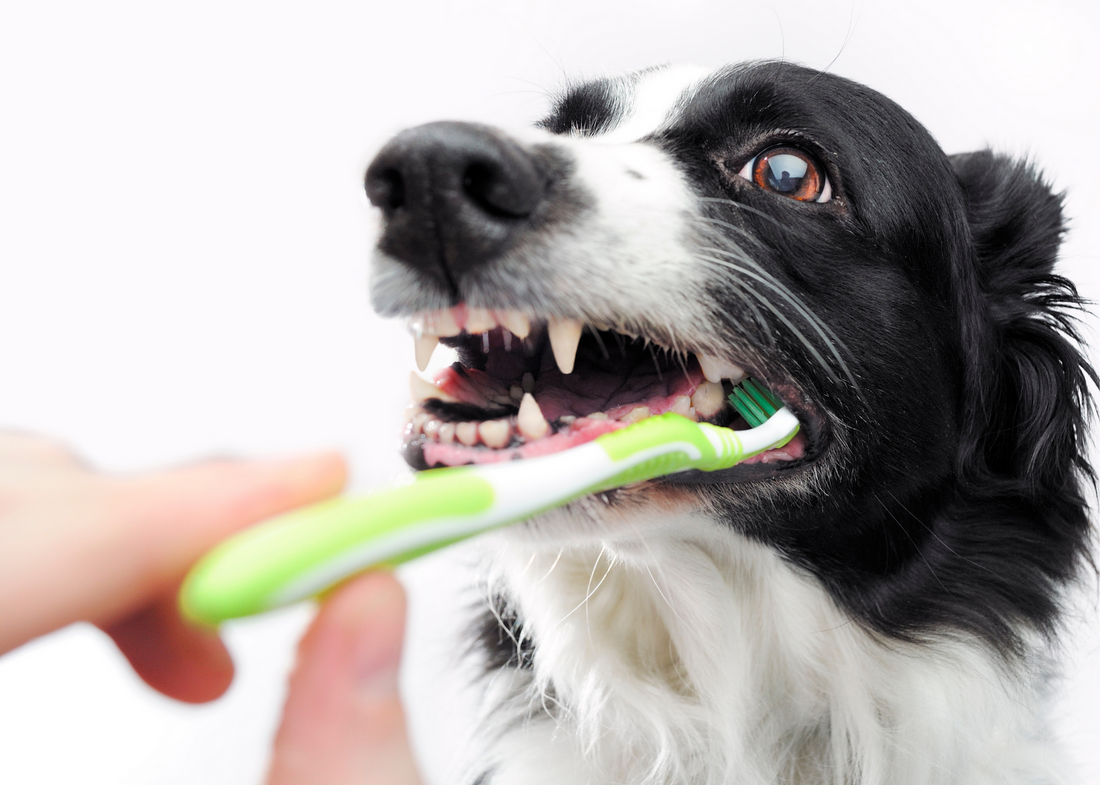Dental hygiene is particularly important to keep your dog happy and thriving.
The accumulation of food and debris on the teeth and gums can lead to problems if not managed in time.
So here are our tips to improve your dog’s oral health!
What is periodontal disease in dogs?
Periodontal disease is the most common tooth and gum problem in dogs and particularly cats!
In this disorder, the gums become red, swollen, and inflamed because of a build-up of food deposits, bacteria, and calcium salts from salivaⁱ.
These deposits put pressure on the gums, eventually leading to the formation of a pocket between the gums and teeth, further collecting debris and leading to more complications (abscesses, root problems etc).
How to improve my dog’s oral health?
Feed a healthy diet.
Unsurprisingly, proper nutrition will maintain the gums in a healthy state.
A common misconception is that feeding dry biscuits will help scrape the plaque off your dog’s teeth. While the piece of kibble can rub off some plaque from the teeth, it also contains a lot of carbohydrates which turns into sugars and will be little help for the gum area. It’s as if you were flossing with a cracker!
You can choose to feed your dog dry biscuits, but it’s best to rely on other solutions to keep your dog’s teeth clean (more on that later!).
Instead, focus on the right nutrients, with ingredients that are rich in vitamins & minerals such as calcium, niacin and folate, to support healthy teeth.
We’re talking leafy greens, broccoli, peanut butter (unsalted and organic).
The action of chewing harder means more saliva is produced.
Saliva naturally cleans teeth by washing away bits of food debris, helping protect the mouth.

Brushing your dog’s teeth.
Brushing your dog's teeth is as important for their oral hygiene as brushing is to ours.
If you can manage to start early when they are still puppies, and do it daily, you’ll be well on the way to healthy chompers!
Some tips to help your dog enjoy having their teeth brushed:
- Choose a calm time when your dog is in a relaxed position.
- Pick the right tools: a dog’s toothbrush, a kid’s toothbrush or even a cloth (if your dog is bristle-phobic, you can use a cloth to rub the toothpaste onto your dog’s teeth).
- Start by rubbing your finger along their upper gums and teeth first, to get them use to the feeling. This step may take a few days before your dog is relaxed enough to proceed further.
- Put some toothpaste (not human toothpaste!!) on your fingertips and let your dog taste it. Here is our DIY natural doggy toothpaste recipe.
- Now try to combine toothbrush and paste! Lift their upper lip and start massaging the gum line and cleaning the teeth, using a circular motion.
- Don’t stress if you can’t do all the teeth in one go. You can do the rest at the next session.
- Always finish the session with lots of rewards and attention!
- Make sure to book regular vet visits to check if your dog needs a professional dental clean.
If your dog won’t come near a toothbrush, you can give him/her it’s own natural “toothbrush” once a week, using a hard vegetable such as a carrot, a cucumber or the stem of a broccoli.
You can also use natural chew treats or bones but make sure they are fresh and raw. Cooked bones or bones that have been frozen, splinter and can be dangerous, causing blockage or tear of the GI tract.
Does your dog like having their teeth brushed?
Resources: 1) Dr Pitcairn's complete guide to natural health for dogs and cats, Fourth Edition, 2017, Rodale.
Want to be the first to get your paws onto the hottest topics? Subscribe to our newsletter!
-------------------------------------------------------------------------------------------------
The Doggy Grub blog is dedicated to helping dogs and their owners achieve happier, healthier lives, changing the way we feed our dogs one bowl at a time! If you would like to know more about our fresh food head to Doggy Grub










